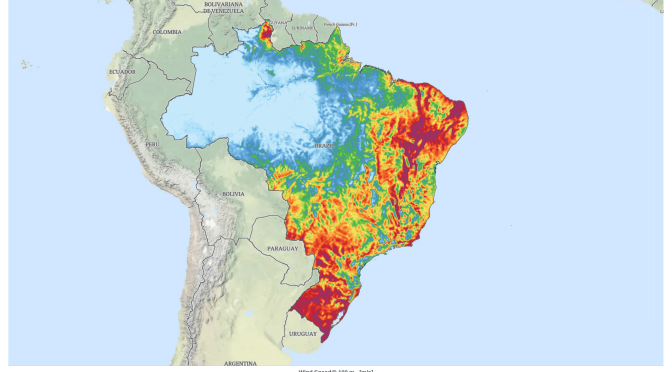
Brazil is already the fifth country that generates wind energy and it also occupied the new position in the world ranking of accumulated wind generation capacity.
This greater diversification of energy sources, cheaper rates and better quality clean energy for the Brazilian population. This is the perspective of the electricity sector in the coming years given the growth of wind generation capacity in the country, leader in the production of this type of energy in Latin America.
“Brazil has been very proactive in renewable sources, both wind and solar, and has an ambitious program to increase the participation of wind energy in the country’s energy matrix,” said the Secretary of Electric Power of the Ministry of Mines and Energy, Fábio Lopes Alves, in an interview with Portal Brasil.
Brazil’s leadership in the production of this renewable energy is also confirmed by Brazilian organizations. In 2016, the National Electric Energy Agency (Aneel) found an even greater expansion, of 2,491 MW, and the Electric Energy Commercialization Chamber (CCEE) registered an increase of 53.4% last year compared to 2015.
For the secretary, the trend is for the generation of this renewable source to increase in the coming years, which may even lower the Brazilian electricity bill. “Today, more than 7% of all the energy produced in Brazil comes from wind energy. It has a very strong growth trend,” he said, noting that wind power is already cheaper compared to power generated from hydroelectric power plants.
Northeast in the lead
Benefited by strong wind seasons, the Northeast Region continues to be the largest hub for wind power generation in Brazil. According to the CCEE, Rio Grande do Norte was the main generating state in Brazil last year. The Potiguar plants produced an average 1,206 MW in the period, a figure that represents an increase of 50% compared to 2015.
“Today in the Northeast, 50% of the energy generated is wind power and the trend is for it to grow,” Alves said. “The Northeast has very favorable wind conditions. Therefore, it is the region where today there is the largest installation of solar and wind farms,” he said, noting that more wind farms will bring more solar projects, to complement the renewable energy source .
Even so, the country’s main source of energy continues to be small and large hydroelectric plants that, in times of drought, need to be assisted by thermoelectric plants, which generate more expensive energy. The good news is that with the entry into operation of new wind farms, this form of energy now represents 6% of the total in the National Interconnected System (SIN).
Renewable energy
In 2015, Brazil signed an international commitment at COP 21 to increase to 33% the use of renewable sources, in addition to hydroelectric, in the total energy matrix by 2030, increasing the share of renewable energies (in addition to hydroelectric) in electricity supply to at least 23% by 2030, even increasing the share of wind, biomass and solar power.